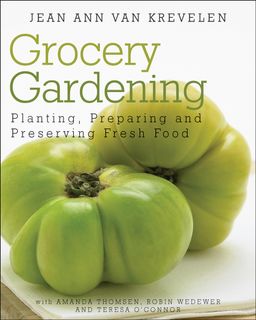For healthy vegetable gardens, it's best to rotate your crops each year. By rotating your vegetable crops each year, you'll reduce pests and pathogens and add nutrients to the soil. That's why you should avoid growing vegetables from the same family in the same place more than once over a three-year period.
It's not always easy to remember which vegetables belong in the same families, which can make crop rotation a bit challenging. To make it easier, I've listed vegetable plant families and the common names of popular vegetables in each family:
Alliaceae: Chives, garlic, leek, onion
Chenopodiaceae: Beet, chard, spinach
Brassicaceae: Broccoli, Brussels sprout, cabbage, cauliflower, Chinese cabbage, kale, kohlrabi, mustard greens, radish, rutabaga, turnip
Asteraceae: Endive, globe artichoke, lettuce
Cucurbitaceae: Cantaloupe, cucumber, pumpkin, summer squash, winter squash, watermelon
Poaceae: Corn
Fabaceae: Green bean, fava bean, lima bean, pea, snap bean
Liliaceae: Asparagus
Polygonaceae: Rhubarb
Solanaceae: Eggplant, pepper, potato, tomato
Umbelliferae: Carrot, celery, Florence fennel, parsley, parsnip
Tips: Keep a notebook to remember what you planted each growing season. If you grew eggplant in a certain place in the garden over the last two years, don't plant family members peppers, potatoes or tomatoes in the same spot this year. Instead, plant a vegetable from another family, such as carrots.
Perennials such as asparagus or rhubarb don't need to be rotated annually. Crop rotation is used for annual vegetables planted each year.
Plant Information Source: "California Master Gardener Handbook," published by the University of California's Agriculture and Natural Resources Department and the University of California Cooperative Extension.
Photo Credit: Isabel Gomes












Great reminder!
ReplyDeleteI'd be so lost without my garden notebook.
You're so right, Annica. Just the other day, I went looking for my notes from last year... Thanks for stopping by. Teresa
ReplyDeleteI don't have a lot of room or a lot of sun so I'm pretty much an stuck planting things in the same spot of the garden each year. Do you think that transfering the soil between the different spots would do the trick?
ReplyDeleteStevie: You might want to grow vegetables in containers. Look for smaller varieties that are well suited to containers. Earth Boxes, for example, don't need a lot of room in the garden. It's easier to change the dirt in these containers than to transfer dirt around your garden. Good luck! Teresa
ReplyDelete